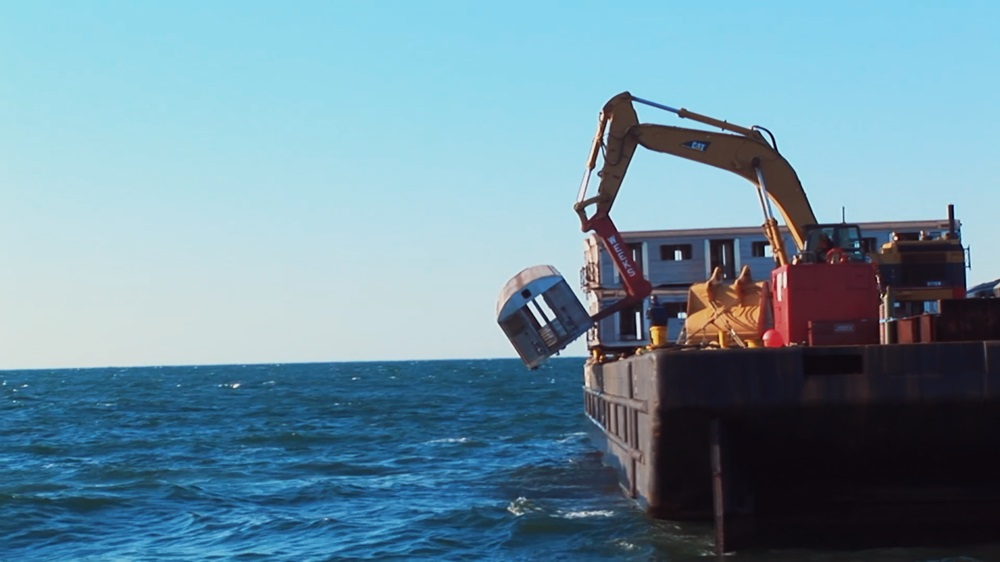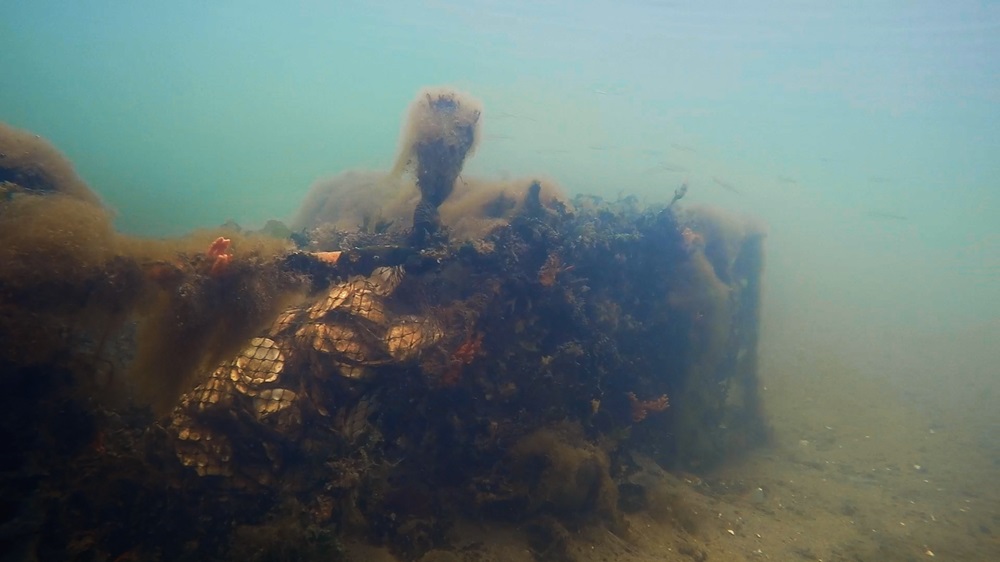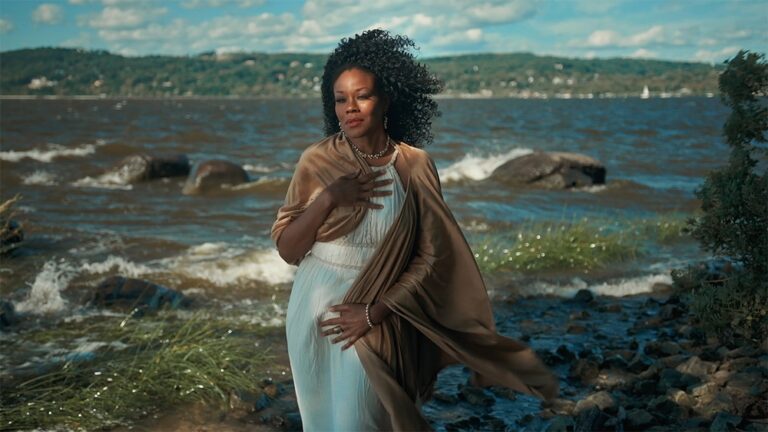And while the documentary sometimes struggles under the weight of its stylistic ambitions, Packer’s storytelling and the movie’s message more than make up for the choice to favor visual poetry over a more grounded and substantive exploration.
Related Review: ‘Emergent City’: An (Oftentimes) Objective Take on Contemporary Urban Development
An Impressionistic Documentary of a ‘Dish as Old as Time’
“Holding Back the Tide” traces the oyster’s life cycles in New York, once the world’s oyster capital. The film positions the oyster not only as a crucial figure in the city’s ecological restoration, but also as a symbol of resilience and queerness, with much to teach about survival in a world facing environmental and societal challenges. Through Packer’s vision, the oyster becomes entangled with human lives, myth, and nature, as queer characters embody ancient stories and discover the overlooked history and biology of the bivalve that once built New York.
In between the explorations and stories, Packer interjects philosophical musings and reflections about human existence and our connection to our surroundings.
We build, break, morph, become, and become ourselves again.
The tides rise and fall.
A rock turns to sand.
An island is made, remade, and made a city.
I find Packer’s approach here refreshing, as she eschews the traditional talking-head interviews and expository structure that often dominate the genre. Instead, “Holding Back the Tide” offers a more immersive, free-flowing experience that blends documentary realism with abstract recreations, poetic narration, and staged moments of visual beauty.
The cinematography by John Marty is frequently stunning, capturing New York’s shores, subway systems, and fish markets with an eye for the interplay between the synthetic and the natural world. In these instances, the film really excels, particularly in sequences where urban and aquatic worlds collide. These include shots of old subway cars dumped into the ocean to form artificial reefs, and New Yorkers trying oysters for the first time to varying reactions. The oyster-tasting scene alone, to me, is cinema.

Neither Didactic nor Expository, but a Little too Experimental
Yet for all its visual splendor, “Holding Back the Tide” suffers from a lack of narrative focus. While Packer acknowledges the hybrid nature of the project, the film’s structure feels meandering, often playing a little too experimental. The transitions between the ecological history of the oyster and its metaphorical connection to queer identity can feel strained at times, leaving both subjects only superficially explored.
The movie spends considerable time on artistic recreations, such as presenting artist/activist Dragonfly as a mermaid-like figure drifting through New York’s waters, or queer actors recreating old oyster-related paintings and narratives. While these scenes are beautifully shot, they sometimes feel like affectations that distract from the more grounded, compelling moments with real-life figures like Sue Wicks, the oyster farmer who serves as the film’s visual and expository anchor.
In Packer’s defense, she probably saw the need to explore ideas that pure documentary footage couldn’t capture, leading her to incorporate fictionalized sequences for the film. And I think that’s fair. Her choice to craft a more immersive, experimental documentary is something that documentaries today need to embrace more. As a result, at the same time that it immerses the audiences, it veers away from a didactic approach that proves harder to swallow in the end.
A Tug-of-War Between Style and Substance
Nonetheless, there are instances when the film’s abstract flourishes feel more like stylistic indulgences than narrative necessities.
One particularly illustrative example of this tension is the film’s recurring scenes featuring Sue Wicks. Grounded and straightforward, her scenes, set against the gray waters and overcast skies, provide a welcome contrast to the movie’s more playful, fantastical elements. Wicks’ discussions of oyster farming and the gender fluidity of oysters create a compelling throughline that connects the film’s lofty themes to real-life experiences.
However, these moments of clarity and insight are often interrupted by symbolic, aesthetic sequences that, while visually captivating, can feel emotionally distant and disconnected from the film’s core.
Related Review: The Conservation Doc ‘Deep Rising’ Points Some Fingers, but Ultimately Holds Back in its Soft Peddle Approach

‘Holding Back the Tide’: A Story of Renewal and Rebirth, Identity, and Connection
Ultimately, the abstract recreations, though visually arresting, often detract from its potential to engage the audience more deeply with its central themes. The oyster-as-queer-icon metaphor is interesting, but it’s not explored with the depth or complexity that would make the connection truly resonate. At times, the documentary’s experimental nature feels like it’s pushing the boundaries of docu-filmmaking for the sake of doing so, rather than in service of a more coherent, impactful narrative.
Make no mistake, though: I enjoyed “Holding Back the Tide.” I appreciate how Packer managed to weave together so many disparate elements into a 77-minute film. The title itself suggests a call to action, emphasizing the need for people to be resilient and take initiative. However, for all its ambition, it often feels more like a beautiful collage than a cohesive narrative.
That said, Packer’s willingness to take risks is commendable. “Holding Back the Tide” is far from perfect, but it offers a bold vision that challenges viewers to think differently about the relationship between ecology and identity. And in a time when many documentaries feel formulaic, this is a refreshing change.

Emily Packer’s “Holding Back the Tide” opens at LA’s Laemmle theatres Friday, Oct. 4, 2024. Follow us for more coverage.


